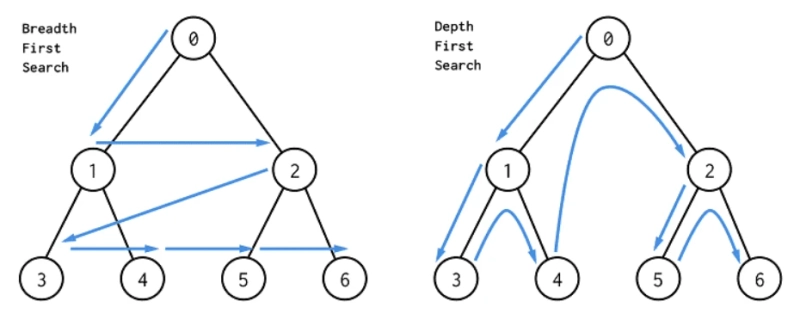Introduction
Let's dive into the world of Breadth-First Search (BFS) and Depth-First Search (DFS) algorithms and unravel the importance of queues and stacks.
Anyone entering the worlds of algorithm design or computer science should understand the differences between BFS and DFS.
We'll make these concepts easy to understand, explaining how they contribute to the smart functioning of each algorithm.
The Basics of Queues and Stacks
Queues in BFS
Think of queues like waiting in line for a rollercoaster. In BFS, a queue helps the algorithm explore step by step, like going through each person in line.
It ensures a thorough and organized exploration, particularly useful when you want to find the shortest path.
Stacks in DFS
Now, imagine a stack of plates. In DFS, a stack operates like taking the top plate off the stack. It explores deeply into one path before moving on to the next.
This back-and-forth movement, known as backtracking, helps DFS navigate through possibilities effectively.
Using Queues and Stacks in BFS and DFS
Making Breadth-First Search (BFS) Better with Queues
Picture a systematic search, much like playing a game of chess where you explore each move methodically.
BFS uses queues to keep track of what to explore next. This helps in scenarios where finding the shortest path is crucial.
Improving Depth-First Search (DFS) with Stacks
Imagine exploring a maze, going deeper into one path before trying another. DFS uses stacks to make this exploration efficient.
The ability to backtrack with stacks is handy when there are multiple paths to consider.
Practical Examples of Queues and Stacks
Real-world Uses of Queues in BFS
Queues in BFS have real-world applications, like finding the quickest route on a map or navigating a network efficiently.
Their versatility extends to various scenarios where order and efficiency matter.
Practical Instances of Stacks in DFS
DFS with stacks proves useful in scenarios like solving mazes or organizing tasks in a way that ensures every possibility is considered. It's like exploring all paths before settling on the best one.
VISIT ALSO: What is Red-Black Tree: Your Guide to a Balanced Data Structure
FAQs: Answering Common Questions
How is BFS different from DFS when it comes to queues and stacks?In BFS, it's like exploring a map step by step. In DFS, it's more like going deep into a maze before trying other paths.
Can you use a queue in DFS or a stack in BFS?While it's not the norm, you can adapt these structures. However, it might not be as efficient as using them in their intended algorithms.
Are queues and stacks only for graph algorithms?No, they're versatile tools used in various computing scenarios for their efficiency. They go beyond graph algorithms to solve different problems.
What happens if a queue or stack gets too full during an algorithm?If it overflows, it may lead to issues. Implementing safety measures, like adjusting the size dynamically, helps prevent these problems.
Do BFS and DFS always find the best solution?BFS guarantees the shortest path, but DFS doesn't ensure the best solution. It depends on the specific needs of the problem.
Can BFS and DFS be combined for better results?Yes, combining them, known as Bidirectional Search, offers a balanced approach, blending efficiency with exhaustive exploration.
VISIT ALSO: 7 benefits of advertising on social media
Conclusion
In wrapping up, understanding queues in BFS and stacks in DFS demystifies the complexity of these algorithms. From navigating maps efficiently to exploring mazes thoroughly, these simple concepts are the backbone of problem-solving in computing.


